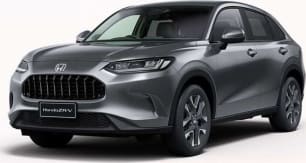In previous tests, the MU-X has been fine on road and more than adequate on gravel, dirt tracks, and during low-range 4WDing. But it’s been a jarring, skippy ride on irregular surfaces rather than as composed as it could – and should – have been. The culprit? Firm suspension, over-inflated tyres, too-tight trousers, who knows?
The good news is it seems like Isuzu has ironed out any issues in the suspension, minor or otherwise, because the MU-X is now is a lot better in terms of ride and handling than ever before.
Off-road, the MU-X has always been a proven combination of its 3.0-litre, four-cylinder turbo-diesel engine, clever six-speed automatic transmission, and an off-road traction control system that's been increasingly well recalibrated through a number of generations.
The engine is tractable and gruff, it has plenty of grunt and, as long as you're not driving like a complete hoon, you can usually get through most obstacles without a lot of fuss.
It's this mix of mechanicals and driver-assist tech that make the MU-X such an effective 4WD package. And there are a number of reasons for that.
For one, that engine delivers plenty of torque down low and in the mid-range torque and that's crucial for four-wheel driving.
And another thing, Rough Terrain Mode – like a beefed-up and fine-tuned off-road traction control – proves very effective because it punches torque to the wheel with the most traction – while wheel spin on tyres that aren't touching dirt is minimised – and that way it keeps the vehicle moving through obstacles with safe and controlled momentum.
As I’ve noted before though, Rough Terrain Mode is not a magic all-conquering solution, but it is another handy addition to the MU-X’s off-road toolbox.
And the MU-X also has a rear diff lock to back you up – and that's another valuable component.
The MU-X has approach, departure and ramp-over angles of 29.2, 26.4 and 23.1 respectively.
A listed 235mm of ground clearance is about standard for this kind of wagon but, as I’ve said before, it seems vulnerable in the underbody, side steps and its plastic mud guards. So the underbody may touch dirt, depending on how challenging the terrain is.
Wading depth is listed as 800mm.
But, as always, with focused driving, you’ll have lots of fun and you'll minimise any superficial damage or scuff marks to the MU-X.
The MU-X has plenty of potential as a touring platform, but, if you’re planning to do any off-roading beyond well-maintained tracks, then get rid of its road-biased tyres and replace them with all-terrain tyres.
The showroom-standard tyres on this MU-X – 265/50R20 Bridgestone Dueler HTs – are okay, but not really up to scratch if tough 4WDing is what you’re keen to do. I’d prefer an 18-inch wheel and tyre package with decent all-terrains.
The MU-X has a full-sized underslung spare and in terms of packability, the MU-X X-Terrain has a listed payload of 605kg, GVM is 2800kg and GCM is 5900kg.
If you are considering using your MUX as a tow vehicle, it's handy to know that it can legally tow 750kg (unbraked) and 3500kg (braked), which is the standard for large four-wheel-drive wagons.
Be aware though that, as with any other vehicles, once you're towing anywhere near the maximum weight, your payload is greatly reduced.






.png)





























.png)























